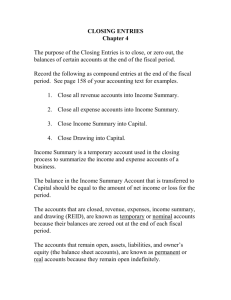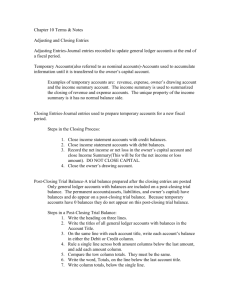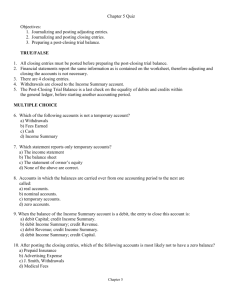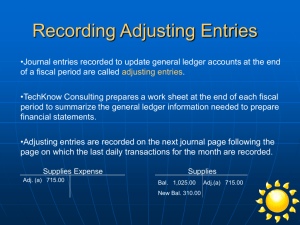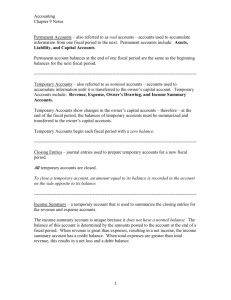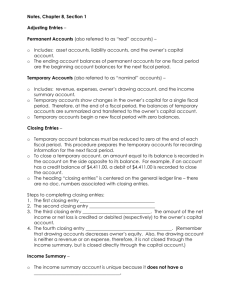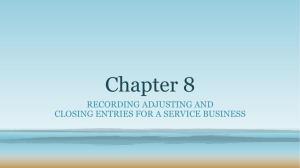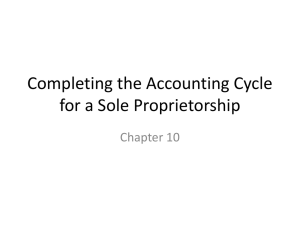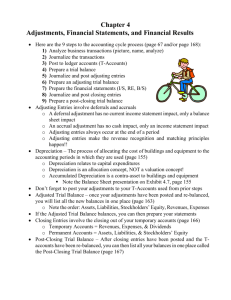Accounting Chapter 17: Recording Adjusting and Closing Entries for
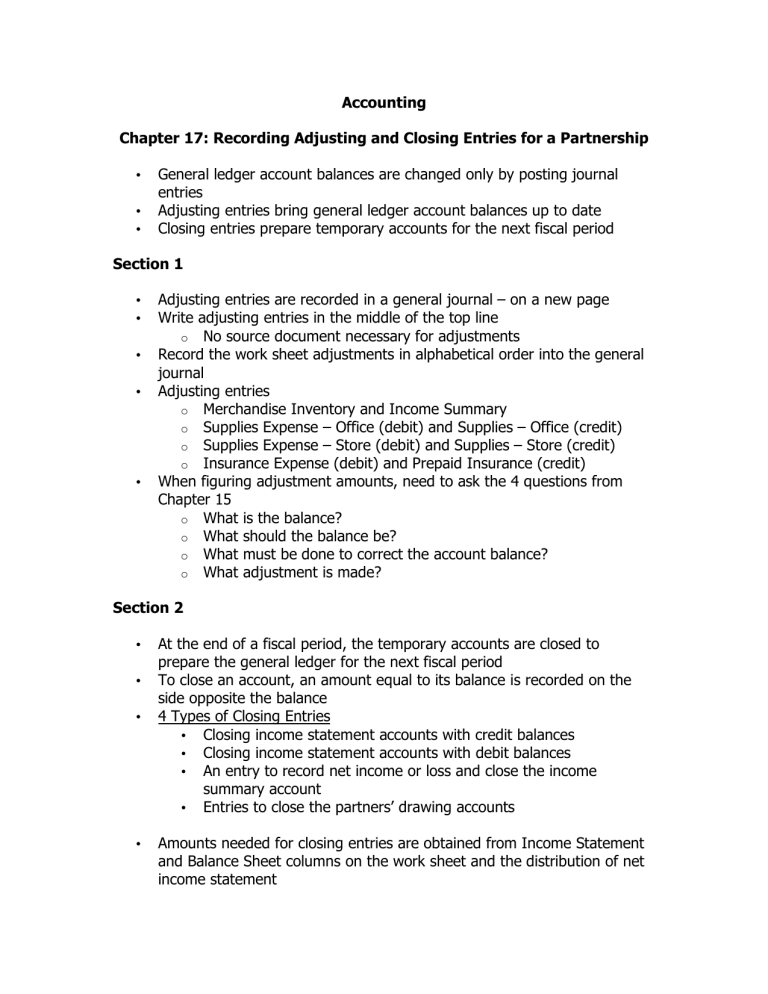
Accounting
Chapter 17: Recording Adjusting and Closing Entries for a Partnership
•
•
•
General ledger account balances are changed only by posting journal entries
Adjusting entries bring general ledger account balances up to date
Closing entries prepare temporary accounts for the next fiscal period
Section 1
•
•
•
•
•
Adjusting entries are recorded in a general journal – on a new page
Write adjusting entries in the middle of the top line o
No source document necessary for adjustments
Record the work sheet adjustments in alphabetical order into the general journal
Adjusting entries o
Merchandise Inventory and Income Summary
Supplies Expense – Office (debit) and Supplies – Office (credit) o o o
Supplies Expense – Store (debit) and Supplies – Store (credit)
Insurance Expense (debit) and Prepaid Insurance (credit)
When figuring adjustment amounts, need to ask the 4 questions from
Chapter 15 o
What is the balance? o o o
What should the balance be?
What must be done to correct the account balance?
What adjustment is made?
Section 2
•
•
•
At the end of a fiscal period, the temporary accounts are closed to prepare the general ledger for the next fiscal period
To close an account, an amount equal to its balance is recorded on the side opposite the balance
4 Types of Closing Entries
•
Closing income statement accounts with credit balances
•
•
•
Closing income statement accounts with debit balances
An entry to record net income or loss and close the income summary account
Entries to close the partners’ drawing accounts
•
Amounts needed for closing entries are obtained from Income Statement and Balance Sheet columns on the work sheet and the distribution of net income statement
•
•
•
•
•
•
•
•
Closing entries are recorded in the General Journal after adjusting entries
The ending balance of permanent accounts are the beginning balance for the new fiscal period
Permanent accounts: assets, liabilities, owner’s capital accounts
Temporary accounts: revenue, cost, expense, owner’s drawing accounts
Income Summary: temporary account that summarizes the closing entries for revenue, cost, and expenses o
Used only at the end of the fiscal period to help prepare other accounts for a new fiscal period
Income Summary account is unique because it does not have a normal balance side o
When revenue is greater than expenses have a credit balance (Net o income)
When expenses greater than revenue have a debit balance (Net loss)
Closing entry for an Income Statement account with a credit balance: debit the account (Sales) and credit Income Summary
Closing entry for an Income Statement account with a debit balance: credit the accounts and debit Income Summary for the sum of all the credits
Section 3
•
•
•
•
•
•
•
Net Income increases the partners’ equity and must be credited to the partners’ capital accounts
Share of net income to be recorded for each partner is shown on the distribution of net income statement
If there is a net loss, partners’ capital accounts are debited and Income
Summary credited
If there is a net income, partners’ capital accounts are credited and
Income Summary is debited
Drawing accounts are not closed through Income Summary – closed directly through capital accounts
Debit capital accounts and credit drawing accounts
After closing must post all the entries to the general ledger
Section 4
•
•
Balance Sheet accounts have up to date balances to begin the new fiscal period
Income Statement accounts have zero balances to begin the new fiscal period
•
•
•
A post-closing trial balance is prepared to prove the equality of debits and credits in the general ledger
See page 445 for steps to preparing the Post-Closing Trial Balance
See page 446 for the accounting cycle for a merchandising business
